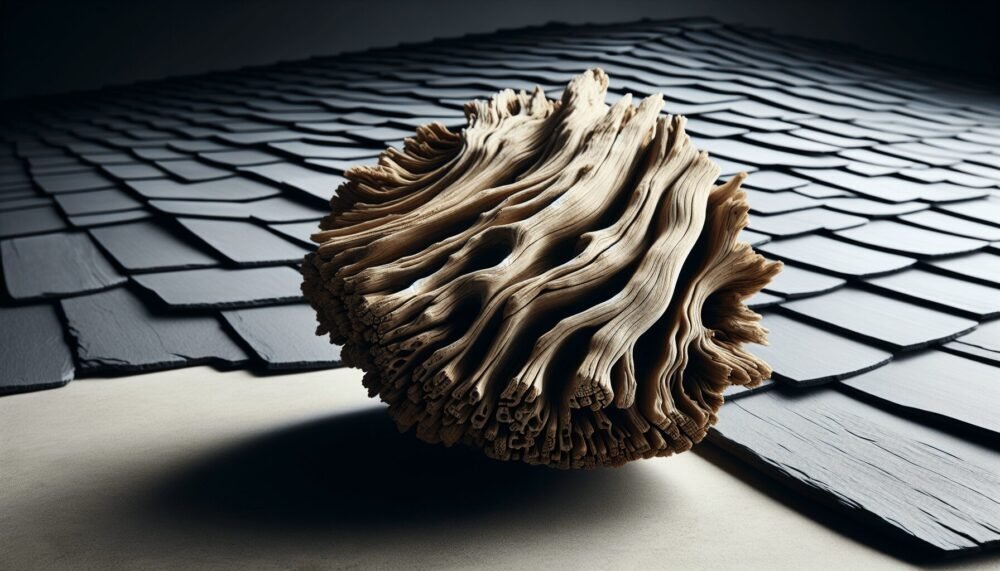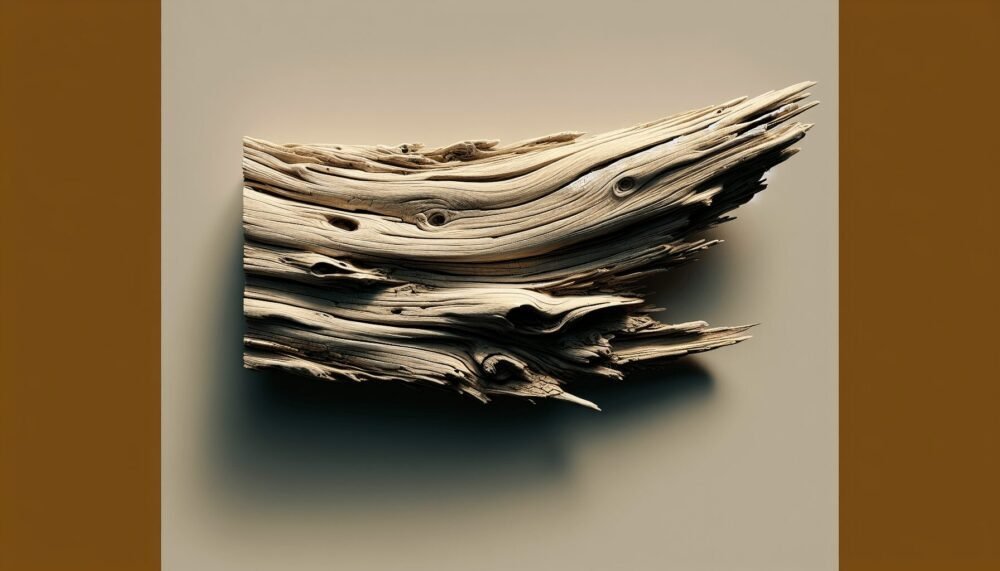Have you ever wondered what it’s like to create and live under a driftwood roof? This unique roofing style not only adds a distinctive aesthetic to your home but also promotes sustainability by utilizing natural materials. A driftwood roof can be more than just a fascinating design choice; it can be an emblem of environmental stewardship and a connection to the natural world.
What is a Driftwood Roof?
A driftwood roof is a roofing system composed primarily of driftwood—wood that has been washed ashore by rivers, lakes, or the ocean. The wood is often weathered, giving it a distinct, worn appearance that can enhance the look of any structure. This roofing type is particularly popular in coastal areas where driftwood is plentiful.
The Appeal of Driftwood Roofs
Driftwood roofs have a particular allure. They’re often chosen for their rustic charm and the natural, aged look that they bring to a building. Each piece of driftwood carries its own history, adding character and uniqueness to the roof. But beyond aesthetics, there are several practical benefits as well.
Environmental Benefits
Using driftwood for roofing is an eco-friendly choice. You’re repurposing materials that would otherwise go to waste. By selecting driftwood, you reduce the demand for freshly cut lumber, which in turn conserves our forests. This sustainable practice not only helps in reducing your carbon footprint but also lessens the impact on our natural resources.
How to Source Your Driftwood
Finding the right driftwood for your roof may seem like a daunting task, but it can be an enjoyable and rewarding experience.
Sourcing Locally
If you live near a coastline, river, or lake, you might have easy access to driftwood. Walking along the shorelines and collecting driftwood can be a therapeutic activity. However, always check local regulations, as some areas have rules against removing driftwood due to its importance to local ecosystems.
Purchasing Driftwood
For those who do not have easy access to natural driftwood, there are alternatives. Many businesses specialize in selling driftwood. Purchasing driftwood ensures that the wood is already cleaned and ready for use, saving you time and effort in preparation.
Quality and Suitability
When selecting driftwood, ensure the wood is sturdy and free from rot. Since your roof will need to withstand the elements, it’s crucial to choose durable pieces that won’t break down quickly. Size and shape are also important considerations—you’ll want pieces that fit together well and cover the roof efficiently.

Preparing Driftwood for Use
Once you have sourced your driftwood, you’ll need to prepare it for installation. Proper preparation is essential to ensure that your roof will be durable and long-lasting.
Cleaning
Begin by cleaning the driftwood to remove salt, sand, and any organisms. Soak the wood in freshwater for a few days, regularly changing the water to ensure all salt is removed. This step is crucial as leftover salt can lead to wood degradation over time.
Drying
After cleaning, let the driftwood dry completely. The drying process will depend on the wood’s size and your local climate, often taking several weeks. Proper drying is important to prevent mold and ensure the wood is ready for treatment.
Treating the Wood
Treating the wood helps to shield it from moisture, pests, and rot. Using a natural wood preservative can maintain the eco-friendly nature of your driftwood roof. Apply the preservative according to the manufacturer’s instructions and let it dry thoroughly before proceeding to installation.
Designing Your Driftwood Roof
The design phase is where your creativity can shine. Consider both aesthetic and practical elements when planning your driftwood roof.
Structural Support
Driftwood is often irregular in shape, making it heavier and harder to work with than conventional materials. Ensure that your roof’s underlying structure is strong enough to support the additional weight. Consulting with a structural engineer may be a wise choice to guarantee safety and stability.
Layout Planning
Lay out your driftwood pieces to visualize how they will fit together. It might be useful to sketch a plan or use a temporary mock-up to make adjustments before installation. Aim for a cohesive look while accommodating the wood’s natural variations.

Installation Process
The process of installing a driftwood roof involves several careful steps to ensure a stable, secure, and visually appealing result.
Initial Layer
Begin by installing a waterproof underlayment to protect against leaks. This layer acts as a barrier, ensuring that your roof remains dry even during heavy rainfall.
Placing the Driftwood
Start from the bottom edge of the roof and work your way up. Place each piece of driftwood securely, overlapping them as necessary to provide thorough coverage. Use galvanized or stainless steel screws and brackets to secure the wood, preventing rust and increasing the roof’s longevity.
Sealing Gaps
Given the irregular shapes of driftwood, you may encounter gaps and spaces. Use natural caulks and sealants to fill these gaps and create a watertight seal. This step is crucial in preventing water infiltration and ensuring the durability of your roof.
Maintenance and Longevity
A driftwood roof requires regular maintenance to remain in optimal condition. Routine care can significantly extend the life of your unique roofing system.
Regular Inspections
Conduct periodic inspections to check for damage, rot, or loose pieces of driftwood. Address any issues promptly to prevent them from worsening.
Re-treating the Wood
Over time, the protective treatment applied to your driftwood will wear off. Reapply the wood preservative as needed to maintain its resistance to the elements. Generally, this should be done every few years, but it may vary depending on your local climate.
Cleaning
Keep the surface of your driftwood roof clean by removing debris such as leaves, branches, and dirt. This helps prevent moisture traps that could lead to rot or mildew.
Driftwood Roof in Various Climates
When considering a driftwood roof, it’s essential to take into account your local climate. Driftwood behaves differently in various weather conditions, so understanding these dynamics will help you maintain your roof more effectively.
Coastal Climates
In coastal regions, driftwood roofs can blend seamlessly with the natural environment. However, the high salt content in the air can accelerate wood degradation. Regular treatments with wood preservatives and thorough cleaning to remove salt build-up are crucial.
Humid Climates
Humid climates can pose a challenge as moisture accelerates wood decay. Ensure effective waterproofing and ventilation to prevent mold and mildew. Regular inspections and maintenance become even more critical to address any early signs of moisture damage.
Dry Climates
While driftwood may last longer in dry climates due to the lack of moisture, it can become brittle over time. Applying treatments that include UV protection can help maintain the wood’s integrity and appearance.
Legal Considerations
Before embarking on your driftwood roof project, it’s important to be aware of any legal restrictions or requirements that may apply.
Local Building Codes
Check local building codes to ensure that a driftwood roof is permitted in your area. Some regions may have specific regulations concerning the types of materials used or the architectural considerations for your home.
Environmental Regulations
In some areas, collecting driftwood might be restricted to protect local ecosystems. Ensure you are abiding by these regulations to avoid legal issues and contribute to environmental conservation.
Permits
You may need permits to install a driftwood roof, especially if you live in a region with stringent building codes. Acquiring the necessary documentation may require some time, so plan accordingly.
Benefits and Drawbacks
While a driftwood roof offers many benefits, it’s essential to weigh these against potential drawbacks.
Benefits
- Aesthetic Appeal: Unique and rustic, adding character to any home.
- Eco-friendly: Uses repurposed materials, reducing environmental impact.
- Durability: When properly treated and maintained, driftwood can withstand the elements.
Drawbacks
- Availability: Sourcing suitable driftwood can be challenging.
- Maintenance: Requires regular upkeep to prevent decay and damage.
- Cost: The process of sourcing, preparing, and installing driftwood can be more expensive than conventional roofing materials.
Real-Life Examples
Seeing is believing, and there are numerous examples of beautiful driftwood roofs worldwide.
Case Study: Coastal Cottage
In a small coastal community, a homeowner transformed their traditional cottage with a driftwood roof. By carefully selecting local driftwood and working with an experienced contractor, the result was a stunning, durable, and visually pleasing roof. The homeowner reported that the roof enhanced both the aesthetic and market value of the property.
| Aspect | Traditional Roof | Driftwood Roof |
|---|---|---|
| Cost | Moderate | High |
| Maintenance | Low | High |
| Environmental | Often uses new lumber | Uses repurposed materials |
| Aesthetic | Standard, varies by material | Unique, rustic charm |
| Durability | High depending on material | High with proper treatment and care |
Future of Driftwood Roofs
As sustainable living becomes more mainstream, the use of natural and repurposed materials like driftwood is likely to grow. This eco-friendly trend aligns with broader environmental goals and offers a way for homeowners to make a personal impact.
Innovations in Treatment
Researchers are developing more effective and environmentally friendly wood treatments that enhance durability without the negative impacts of traditional chemical treatments. These innovations could make driftwood a more appealing option for a broader audience.
Community Projects
Some communities are embracing driftwood and other natural materials for public buildings and community projects. This collective approach not only fosters sustainability but also creates beautiful public spaces that resonate with local culture and history.
DIY Enthusiasts
The rise of DIY culture has brought more attention to unique building materials like driftwood. With online tutorials and community support, more people feel empowered to undertake projects like constructing a driftwood roof, further popularizing this sustainable choice.
Conclusion
Creating a driftwood roof is more than just a construction project; it’s an expression of creativity, sustainability, and respect for nature. While it requires careful planning, sourcing, and maintenance, the rewards in aesthetic appeal and environmental impact are significant. If you’re drawn to distinctive, eco-friendly home improvements, a driftwood roof might just be the perfect project for you.
By considering all aspects—from sourcing and preparation to installation and maintenance—you can create a stunning, durable, and environmentally friendly roof that not only enhances your home but also reflects your commitment to sustainable living.